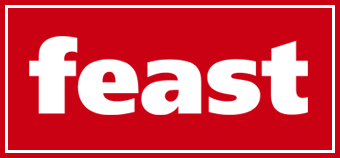Engraving has been an integral part of human creativity for centuries, transforming simple materials into objects of beauty, identity, and value. From ancient artisans carving symbols into stone to modern makers personalizing gifts and creating intricate jewelry, the craft has evolved dramatically. At the heart of this transformation lies the engraving tool—the essential instrument that turns ideas into lasting designs. Choosing the right engraving tool is not just about function; it’s about matching precision, efficiency, and versatility to your creative vision. Whether you are experimenting with your first engraving project or refining your professional skills, understanding the capabilities of different engraving tools will help you achieve the perfect balance between artistry and practicality.
The Evolution of Engraving Tools
The journey of the engraving tool spans thousands of years, reflecting the progression of technology and craftsmanship. Early engravers relied on simple chisels, burins, and gravers, painstakingly carving designs into stone, wood, and metal by hand. These manual engraving tools required exceptional skill, steady hands, and an eye for detail. With the Industrial Revolution came mechanical engraving tools, making the process faster and more consistent without sacrificing too much precision. In recent decades, advancements in electronics and laser technology have transformed the engraving landscape. Today’s electric engraving tools and laser engraving machines offer unmatched speed, accuracy, and versatility, allowing both professionals and hobbyists to create intricate designs on a wide range of materials. This evolution has not only expanded what’s possible but has also made engraving more accessible than ever before.
Types of Engraving Tools and Their Uses
When it comes to choosing an engraving tool, understanding the different types available is crucial to matching your project needs. Manual engraving tools, such as handheld gravers, remain popular among jewelers and artists who prioritize control and fine detail. These manual tools excel in delicate work on metals and small surfaces but require practice to master. For hobbyists and DIY enthusiasts, electric engraving tools offer a more user-friendly option, providing consistent power to carve into wood, leather, and plastics with ease. Laser engraving tools represent the cutting edge of precision and versatility, using focused beams to etch detailed patterns on diverse materials including glass, metal, and acrylic. Lastly, CNC engraving machines automate the process entirely, making them ideal for industrial applications where speed and repeatability are essential. By selecting the right engraving tool for your material and skill level, you can elevate your creative projects to professional standards.
How to Choose the Right Engraving Tool
Choosing the perfect engraving tool depends on several factors including the material you plan to work with, your budget, and your level of experience. For softer materials like wood, leather, and plastic, electric engraving tools are often sufficient and easier to handle. Harder surfaces such as metal or glass typically require more advanced tools like laser engravers or specialized manual gravers. Beginners might prefer starting with electric engraving tools that offer better control and less learning curve, while professionals may invest in CNC or laser engraving machines for speed and precision. Additionally, consider the size and portability of the tool depending on whether you need it for home crafts or industrial use. Understanding your specific needs will guide you toward the best engraving tool for your projects.

Tips for Using an Engraving Tool Effectively
To get the most out of your engraving tool, practice and technique are key. Begin by testing your tool on scrap materials similar to your project surface to understand the appropriate pressure, speed, and angles. Maintaining a steady hand helps produce cleaner, more precise engravings, especially with manual engraving tools. For electric and laser engraving tools, adjust settings like speed and power according to the material’s hardness and thickness. Always work in a well-lit, comfortable space to avoid mistakes. Proper tool maintenance, such as sharpening manual tips or cleaning laser lenses, also plays a crucial role in achieving consistent, high-quality results.
Safety and Maintenance
Safety should never be overlooked when working with any engraving tool. Protective eyewear and gloves are essential to guard against flying debris and accidental slips. Ensure your workspace is well-ventilated, especially when using electric or laser engraving tools that may produce fumes or dust. Regular maintenance will prolong the life of your tools; manual engraving tools require sharpening and cleaning, while electric and laser tools need periodic inspections and lens cleaning. Proper storage in a dry, secure place prevents damage and ensures your engraving tool is ready for use when inspiration strikes.
The Future of Engraving Tools
The future of engraving tools is exciting, with ongoing innovations making the craft more accessible and versatile. Portable laser engraving machines and battery-powered electric engraving tools allow artists and hobbyists to work anywhere with ease. Advances in AI-assisted design software are enabling more precise and creative engraving patterns, while environmentally friendly materials and energy-efficient tools are becoming priorities in manufacturing. As technology evolves, the engraving tool will continue to blend artistry with cutting-edge innovation, opening new possibilities for creative expression and industrial applications alike.
Conclusion
Choosing the right engraving tool is essential to unlocking your creative potential and achieving professional-quality results. From traditional manual tools to modern laser and CNC engraving machines, each type offers unique advantages tailored to different materials, skill levels, and project goals. By understanding the evolution, types, and best practices for using engraving tools, you can confidently select the perfect tool that fits your needs. With the right engraving tool in hand, your creativity truly has no limits.



